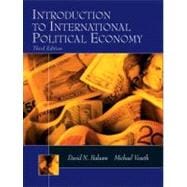
| Perspectives On International Political Economy | |
| What Is International Political Economy? | |
| Wealth and Power: Mercantilism and Economic Nationalism | |
| "Laissez-Faire, Laissez-Passer": The Liberal IPE Perspective | |
| Critical Perspectives on International Political Economy | |
| Ipe Structures: Production, Finance, Security And Knowledge | |
| International Trade | |
| The International Monetary System | |
| Debt: The Political Economy of International Finance | |
| The Global Security Structure | |
| Knowledge and Technology: The Basis of Wealth & Power | |
| State-Market Tensions Today | |
| The European Union: The Economics and Politics of Integration | |
| Democracy and Markets: The IPE of NAFTA | |
| Japan and the Developmental State | |
| States and Markets in Transition | |
| Ipe North And South | |
| The Two Faces of Development | |
| The Changing IPE of Multinational Corporations | |
| The IPE of OPEC and Oil | |
| Global Problems | |
| The IPE of Food and Hunger | |
| The Environment: The Green Side of IPE | |
| Where Do We Go from Here? | |
| Glossary | |
| Index | |
| Table of Contents provided by Publisher. All Rights Reserved. |
The New copy of this book will include any supplemental materials advertised. Please check the title of the book to determine if it should include any access cards, study guides, lab manuals, CDs, etc.
The Used, Rental and eBook copies of this book are not guaranteed to include any supplemental materials. Typically, only the book itself is included. This is true even if the title states it includes any access cards, study guides, lab manuals, CDs, etc.